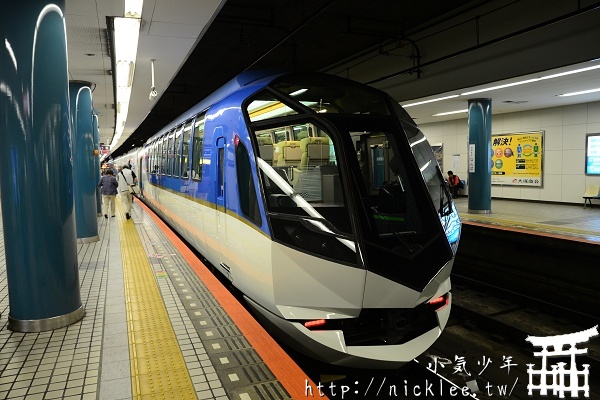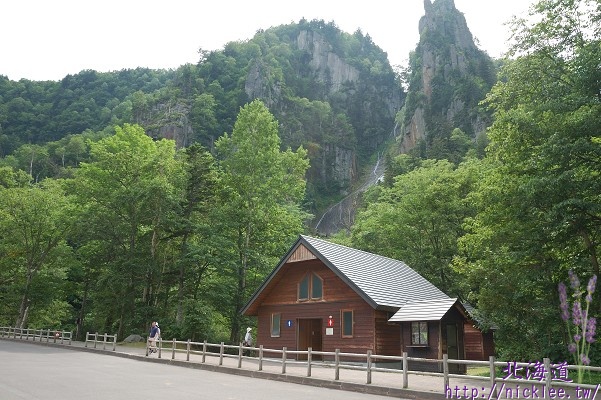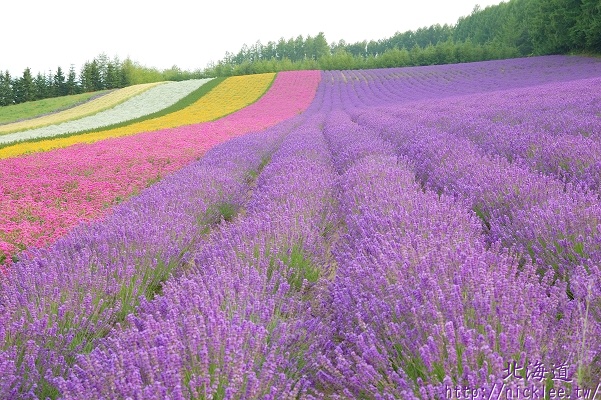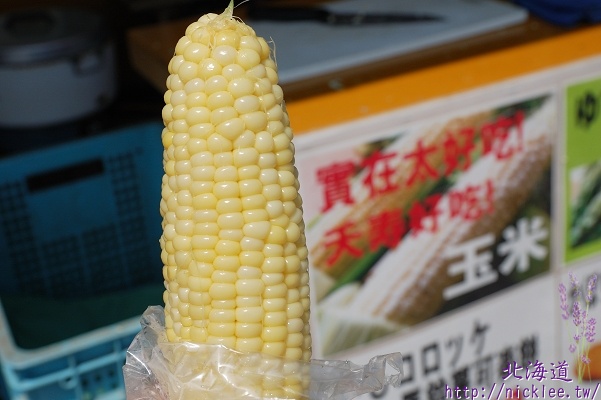This FAQ about Kansai travel is a compilation of common questions I have been answering for the past few years. If a question is listed here, I will not answer it again. I can only try my best to help with answering questions and cannot assist with homework.
Also, why am I not answering your question? There are two most likely reasons:
1. You haven’t done your homework and it’s a handout type of question.
2. The content of your inquiry has absolutely nothing to do with the article, which is something I detest the most.

Frequently Asked Questions about Travel in Kansai – Transportation Section
Q1: I need to go to Osaka, Kobe, and Nara in one day, and Kyoto for two days. What kind of tickets should I buy?
A1: Without a detailed itinerary, it is difficult for me to provide accurate ticket recommendations. Let’s take Kobe as an example. Many people say they want to go to Kobe, but where in Kobe specifically?
If you want to visit Arima Onsen, you can use the KTP or Arima Rokko Pass.
If you want to go to Mount Maya, you can use the Rokko Maya Leisure Pass.
If you plan to visit Maiko, Tarumi Outlet, and Akashi Kaikyo Bridge, you may consider using the KTP or Tarumi Maiko One-Day Pass.
If you only plan to visit Sannomiya, Kitano, and Kobe Port, you can simply buy train tickets and maybe add a City Loop One-Day Pass.
As you can see, even though it’s all Kobe, there are many different ticket options to choose from. Therefore, I cannot answer your question.
In the Kansai transportation guide, there is a list of commonly used tickets in the Kansai region. Please research and choose accordingly.
Q2: I still want to buy tickets to use, can you recommend some?
A2: The usage rules for tickets within each city are as follows. For intercity travel, you will need to check each ticket individually (click here to search).
■ Kyoto City Bus One-Day Pass – You can purchase it by taking 3 Kyoto City Bus trips in a day.
■ Kyoto City Subway One-Day Pass – You can purchase it by taking 3 Kyoto City Subway trips in a day.
■ Osaka Subway One-Day Pass – You can purchase it by taking 3-4 Osaka Subway trips in a day.
■ Osaka Amazing Pass (Card) – You can purchase it if the total value of the entrance tickets to tourist attractions you visit within the day or two exceeds 2000 yen.
■ Kobe CityLoop One-Day Pass – You can purchase it by taking 3 CityLoop bus trips in a day.
■ Nara Transportation Bus One-Day Pass – You can purchase it by taking 3 Nara Transportation Bus trips in a day.
Q3: Which day of my itinerary should I purchase a one-day pass? Is it cost-effective to use xxx pass on that day?
A3: Please first calculate the total transportation expenses for your itinerary, and then compare it with the ticket price to determine whether it is cost-effective.
Q4: Can ICOCA, KTP, and JR West Pass be used at xxx?
A4: I have already provided detailed information about ICOCA, please refer to the article: A Detailed Introduction to ICOCA.
For KTP, please refer to the brief introduction of Kansai Thru Pass.
As for JR West Pass, please refer to JR West Pass Kansai Edition.
For other tickets, please refer to the Kansai Transportation Guide.
Q5: May I ask which days the KTP is applicable for?
A5: Calculate the transportation costs for your itinerary and choose the top three highest-cost days. If the total cost exceeds the price of a 3-day pass, then you can use the pass. However, for places like Kyoto City Bus, Subway, and Osaka Subway, which offer 1-day passes, please consider whether you can replace them with a 1-day pass. For example, if you take the Kyoto City Bus four times in one day, the total fare would be ¥920. However, the Kyoto City Bus 1-day pass is only ¥700. Therefore, the actual cost of taking the bus on that day would be ¥700, not ¥920.
Q6: How do I buy a ticket and ride the train if it exceeds the ticket usage range?
A6: If the boarding location is within the usage range but the destination is outside the range, you can board the train first. When you exit the station, go to the manned ticket gate and present your ticket to the station staff to calculate the additional fare, then pay in cash. If the boarding location is outside the usage range but the destination is within the range, please purchase a ticket first. The ticket should be purchased from the station to the first station within the ticket usage range. Then, use the ticket to pass through the automatic ticket gate when entering the station. When you exit the station, go to the manned ticket gate and present both the ticket and the ticket voucher to the station staff for verification. At this time, the station staff will collect the ticket but return the ticket voucher to you.
Taking the Hankyu One-Day Pass as an example, if you want to travel from Nihonbashi to Kawaramachi, Temmabashi-suji Rokuchome is the first station within the valid range. Therefore, you need to first purchase a ticket from Nihonbashi to Temmabashi-suji Rokuchome (¥230), and then show the ticket and the One-Day Pass to the station staff when you exit.
Q7: How to keep the train ticket stub?
A7: When exiting the station, go through the manual ticket gate and hand the ticket to the station staff while saying, “記念に下さい”. Pronounced as: KI NEN NI KU DA SAI.
Q8: When should I leave Osaka/Kyoto to go to Kansai Airport?
A8: Currently, it is recommended to arrive at Kansai Airport two hours before the flight takes off for a safer journey.
If departing from the Namba area, it is suggested to take the Nankai Electric Railway’s Limited Express or Airport Express train 2.5 to 3 hours in advance.
If departing from the Umeda area, it is recommended to take the JR Express Haruka or Kanku Rapid train 3 to 3.5 hours in advance.
If departing from the Shin-Osaka area, it is suggested to take the JR Express Haruka 3 to 3.5 hours in advance.
If departing from Kyoto Station, it is recommended to take the JR Express train Haruka 3.5 to 4 hours in advance.
Please note that the above does not include the time for purchasing tickets. If you wish to buy tickets, please allow for some extra buffer time.
Q9: What is the latest operating time for buses in Kyoto and subways in Osaka?
A9: The operating hours vary for each bus route and subway station, so it is not possible to provide specific details. Please refer to the timetables on the respective transportation websites. (There are instructions in the Kansai transportation guide.)
Q10: Route A is “like this” and Route B is “like that”. Which one is more cost-effective?
A10: Please calculate the fares for both options yourself, and you will know which one is more cost-effective.
Q11: Do you need to exit the station when transferring from tram A to tram B?
A11: Usually, when transferring between different railway company lines, it is necessary to exit the station. For example, when transferring from Nankai Electric Railway to Kintetsu (Osaka-Namba Station) at Namba Station, you need to exit the station and change trains. Also, when transferring from JR Tennoji Station to Subway Tennoji Station, you also need to exit the station and change trains. However, there are a few routes that offer through service, so there is no need to change trains, such as Tenjinbashi Rokuchome, Shinkaiji, and Takeda. (Please refer to the article on through service.)
Q12: How long does it take to go through immigration at Kansai Airport?
A12: Currently, the immigration process at the first terminal of Kansai Airport can vary in duration. During peak seasons, it may take more than 2 hours, so please be aware of that. The second terminal, with fewer flights, usually takes around 30 minutes to 1 hour to complete the immigration process.
Frequently Asked Questions about Kansai Travel – Attractions Section
Q1: Can you recommend me some itineraries? Are there any must-visit places? Is xxx attraction worth visiting?
A1: Since everyone has different preferences and interests, what I like may not be what you love. Plus, I have already written a lazy guide for Kansai itineraries, which is enough to plan a trip. I’m sorry, but I won’t provide itinerary planning. I have been to various attractions and have written introductions about them, so please search for them yourself: Kansai attractions. As for whether xxx attraction is worth visiting, the answer is the same. Everyone has different preferences, so it’s hard to judge.
Q2: Will this itinerary be too rushed?
A2: Generally, if it gets dark after 6 PM, you can visit 3 to 4 attractions in a day. During autumn and winter, when it gets dark between 4:30 PM and 5:30 PM, it is recommended to visit 2 to 3 attractions in a day. Additionally, if you are moving between cities, please allocate 1 hour for transportation. For moving within the city, please allocate 30 to 60 minutes for transportation.
Q3: Is xxx hotel/xxx attraction far from the train station?
A3: Please check the official website yourself or use Google Maps to check the distance and calculate the walking time to the attraction.
Q4: Which attractions are not suitable for bringing strollers with young children?
A4: Generally, shrines and temples built on hills are not suitable. In the city area, strollers can be used more easily. For example, at Kiyomizu-dera, Gojozaka-Matsubara Street has a slope without stairs, so strollers can be pushed up. Tainai-Meguri and Sannenzaka, on the other hand, have more stairs and are not suitable for pushing strollers.
Q5: Does it snow in Kyoto from December to February? Does it rain from May to June?
A5: I’m not sure if it snows in Kyoto because there are very few days of snowfall throughout the year, unlike in the northern regions. Additionally, the weather is unpredictable, so even if the temperature is low enough, it may not snow if there isn’t enough moisture. As for whether it rains, I have even less knowledge about that.
Q6: When is the best time to admire cherry blossoms and maple leaves in Kansai?
A6: Based on past experiences, the best time to admire cherry blossoms is early April, while the best time to admire maple leaves is mid-November to early December. In late March, cherry blossoms may not be in full bloom, resulting in lower viewing satisfaction. In mid-November, it is recommended to head to higher elevations, while from late November to early December, it is best to stay in the city area. (Please note that the above experiences are for reference only, as weather conditions have become increasingly unpredictable.)
Q7: What time does XXX close? What time does OOO’s store close?
A7: For the opening and closing times of attractions, please refer to their official websites. As for shopping districts (such as Dotonbori, Shinsaibashi, and Kyogoku Street), they usually start closing around 8 PM, and by 10 PM, most of them are already closed. After 10 PM, there are still some establishments open, mostly restaurants, karaoke, and hotels. (Don Quijote, for example, operates 24 hours or until early morning.)
The Nijo Market and the Nishiki Market generally open at around 10 am and close between 5 pm and 6 pm. Some restaurants inside the Nijo Market may operate later, and the Nijo Nakagawa supermarket is open 24 hours.
Q8: Are Arashiyama, Kiyomizu-dera, Kinkaku-ji, or any other popular attractions crowded during peak season?
A8: During peak season, such as cherry blossom viewing (3/25~4/10), Obon festival (8/13~8/16), and autumn foliage viewing (11/15~12/10), these places tend to be crowded. Sundays are especially busy. It is recommended to avoid visiting these three places on Sundays if possible.
Q9: I want to go see the night view, may I ask when does xxx attraction get dark?
A9: Please refer to “Check the sunrise and sunset time”.
Frequently Asked Questions about Kansai Travel – Hotel and Restaurant Edition
Q1: Can you recommend some good hotels to me? Is this hotel good?
A1: Everyone has different standards for accommodation. I haven’t stayed in many hotels, but here are a few for your reference: Kansai accommodation.
Q2: How do I say that I want to leave my luggage at the hotel when checking out?
A2: Teaching you to say it may confuse Japanese people, or they might say a long sentence in Japanese that you won’t understand. So, it’s better to write it down: “荷物を 【午後3時】 に置くことができますか ?” You can show them the sentence above, where 【】 represents the time. In Japan, when talking about time, they divide it based on noon as the reference point. So, before noon is written as “午前” and after noon is written as “午後”. For example, 7 PM is written as “午後7時”, and so on.
Attention!! Usually, it can only be stored for the same day. If you want to store it overnight and won’t be returning to stay again, the hotel may not accept it. Therefore, please make sure to inquire beforehand.
Q3: Can I have my luggage stored in the hotel before I check in the day after tomorrow?
A3: It is generally possible in most business, tourist hotels, and guesthouses. However, the hotel will first confirm that you are their guest before allowing you to store your luggage. Therefore, you should prepare the relevant information to provide to the hotel for confirmation. As for homestays and guesthouses, they may not be able to provide this service, so please confirm with the homestay or guesthouse you have booked.
Q4: Can two people share a meal in a Japanese restaurant?
A4: Generally, Japanese restaurants do not allow sharing of meals. It is recommended to inquire with the establishment by asking in Japanese: “一人前を二人で分けて食べてもいいですか?” (Original reference from fumichen on Backpackers.com)
Q5: Is the food at xxx restaurant delicious?
A5: As mentioned before, some people prefer noodles while others prefer rice. Some say that Sanjotei serves the best sukiyaki, while others claim that Ningyocho Imahan is the most delicious. Which one would you choose? So, go ahead and search for yourself, and see which food review makes your mouth water the most…
Frequently Asked Questions about Kansai Travel – Others
Q1: What should I do if I lose an item in Japan?
A1: Please contact the relevant department for lost items, usually by searching for “お忘れ物” (lost items)… If you don’t know Japanese, be sure to seek assistance from someone who does, such as a concierge. Alternatively, you can reach out to the relevant department of the Ministry of Foreign Affairs for assistance.
Q2: Can you help me translate my name and address?
A2: For the name, please use Chinese to Japanese translation. Any name can be translated. As for the address, please change the following characters in your address to the corresponding Japanese kanji: “縣→県、區→区、號→号、樓→階”.
Q3: Can fruits, meat products, and medicines from Japan be brought back to Taiwan?
A3: Fruits and meat products cannot be brought into Taiwan. As for medicines, there are currently regulations for over-the-counter drugs: up to 12 bottles (boxes, cans, strips, or tubes) of each type, with a total limit of 36 bottles (boxes, cans, strips, or tubes). Tablet or capsule-shaped food products are also limited to 12 bottles (boxes, cans, strips, or tubes) of each type, with a total limit of 36 bottles (boxes, cans, strips, or tubes). As for contact lenses, only 60 lenses of a single prescription are allowed per person, with a limit of one brand and two prescriptions. For specific regulations on medicines, please refer to this link.
Q4: Do I have to carry the items I purchased for tax refund with me?
A4: According to regulations, you are required to carry them with you. However, if you have liquid cosmetics, they must be checked in for handling. If you have purchased too many items and need to check them in, then go ahead and do so. However, if you are caught, you will be responsible for paying the taxes.
Q5: Is it dangerous for a person (female) to wander around Osaka/Kyoto at night?
A5: When you are out and about, anything can happen, even in the safest places. Therefore, it is important to be cautious at all times.
『Original Source:https://nicklee.tw/1/kansai-question/』





